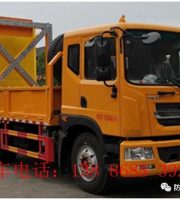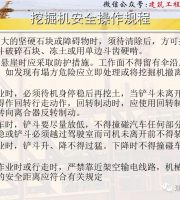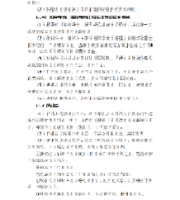Introduction asphalt mixture rolling is the last link of asphalt pavement construction, and also the most important, critical and most problematic construction step
. 
At present, the domestic research on asphalt mixture rolling is not enough, and there is no complete and scientific compaction theory and technology
.
Due to the fact that foreign developed countries have completed the construction of expressways decades ago, the traditional compaction technology has not been revised recently
.
There are great differences between the compaction mechanical performance, pavement design method and construction technology level at that time and now
.
It is obviously unscientific to copy the compaction method of foreign countries at that time for the current pavement construction in China
.
“Technical specification for construction of highway asphalt pavement” (jtgf40-2004) (hereinafter referred to as the 04 edition of “specification”) is not very detailed about the compaction of hot mix asphalt mixture, which needs to be supplemented and refined according to the specific situation
.
Conventional asphalt pavement rolling technology has many disadvantages, such as too long rolling time, difficult to control rolling times, serious pressure leakage, poor flatness, uneven construction quality and so on
.
It needs scientific rolling technology and process to solve the outstanding problems existing in the current asphalt pavement rolling construction
.
At the same time, due to the improvement of asphalt mixture design method, the traditional Marshall design method has been gradually replaced by the advanced GTM or Superpave design method, the compaction standard of asphalt concrete pavement has been significantly improved, and the conventional rolling technology has been unable to meet the current construction technical requirements
.
According to the investigation of many domestic research institutions, the early failure of many expressways is related to insufficient compaction, so it is necessary to study the rolling construction technology matching with the new asphalt mixture design method
.
In view of the above reasons, this paper puts forward a new “combined rolling” technology, adopts a new compaction process, optimizes the combination of rolling machinery, and standardizes the selection of rolling construction parameters, the selection of roller amplitude and frequency, and the way of wheel stacking
.
The problem of asphalt pavement compaction construction is insufficient compaction
.
At present, in the construction of domestic expressway asphalt pavement, insufficient compaction is a more prominent problem
.
The main reason is one-sided pursuit of flatness and surface structure depth
.
The common point of these projects is that the smoothness of the pavement decreases rapidly after opening to traffic, and the deformation of the surface layer is obvious under the rolling load of traffic
.
The control standard of compactness is not accurate
.
The compactness of asphalt pavement in expressway construction can be controlled by 97% of standard density in laboratory, 93% of maximum theoretical density and 99% of test section density
.
In the construction of expressway asphalt pavement, GTM asphalt mixture design method and Superpave method with higher compaction standard are accepted, but the laboratory density test specimen is made by the same method as the mix proportion design molding specimen, and this method has the following problems
.
(1) If Marshall method is used in mix proportion design and field laboratory, it is problematic to control the compactness according to Marshall standard density, because it is proved that Marshall standard density is low
.
(2) If GTM or Superpave method is used in mix proportion design to form test pieces, most of the site laboratories do not have these two kinds of test instruments in actual construction, and can only do Marshall test, which can not meet the requirements of “the same method is used for making laboratory density test pieces as mix proportion design to form test pieces”
.
(3) Due to the great variation of surface stone in China and the high requirement of site test frequency, it is expensive to use GTM or Superpave method to form specimens, and the construction unit can not afford it
.
In addition, the maximum theoretical density is obtained by measurement and calculation, and the error is very large; however, the density of test section is not reliable, so it is unable to determine whether the test effect is the best
.
Therefore, the current compaction standard used in the construction of expressway asphalt pavement can not accurately control the on-site compaction
.
If the rolling time is too long, the traditional compaction process is that the steel wheel roller and rubber tyred roller are rolled separately, which will result in too long rolling time and too large temperature drop, and can not guarantee the completion of re compaction at high temperature
.
Especially in low temperature construction, the temperature drops faster, and the construction quality cannot be guaranteed
.
It’s not easy to control the rolling times
.
In addition to subjective reasons, objectively speaking, it’s really difficult to control the traditional rolling times
.
Five or six rollers shuttle back and forth in the working face of about 600 m2, so the management personnel can’t count the times
.
It is difficult to control the flatness
.
Under the high temperature, the track of rubber tyred roller is too heavy
.
Because the construction unit is worried that the flatness is not up to the standard, the rubber tyred roller is usually used in the later stage of re compaction
.
But at this time, the rubber tyred roller will still leave a deep track, and the temperature of the road surface is very low, so it is very difficult to eliminate the track in the final compaction, and finally can not ensure enough flatness
.
The construction quality can not be guaranteed
.
Because of the problems of low temperature rolling, leakage of rolling, serious temperature segregation, low flatness, insufficient local compaction and so on, the result is poor pavement quality
.
Combined rolling technology is to use the rubber tyred roller to redistribute the aggregate in the mixture, reduce the friction resistance and make the mixture easy to be compacted; Then the vibration compaction is carried out to make the friction between the compacted materials gradually change from the initial static friction state to the dynamic friction state, and make full use of the sinusoidal alternating pressure of the vibratory roller to compact the mixture
.
The best compaction effect is achieved under the alternating action of rubber wheel rubbing and sinusoidal alternating pressure of vibratory roller
.
The combined roller gives full play to the advantages of rubber tyred roller in kneading and high linear pressure
.
Its process principle is very close to GTM and Superpave forming method, and the consistency between indoor test and outdoor construction is high
.
Different combinations of rollers are used for different asphalt mixtures
.
For ordinary asphalt mixture, the combination of rubber tyred roller and double drum vibratory roller is used; for SMA and OGFC mixture, the combination of ordinary double drum vibratory roller and high frequency double drum vibratory roller is used; for super thick pavement, the combination of rubber tyred roller, ordinary double drum vibratory roller and high frequency double drum vibratory roller is used; The combination of rubber tyred roller and oscillating roller is used for bridge deck pavement with limited vertical pressure
.
In group rolling operation, two rollers in each group are about 1 m apart, advancing and retreating synchronously at a unified speed
.
The combined rolling process of asphalt concrete pavement is shown in Figure 2
.
Operation points of combined rolling construction at present, the main asphalt mixtures in China are AC, ATB, am asphalt mixture, and special SMA, OGFC asphalt mixture
.
In addition, there are super thick pavement (the thickness of asphalt concrete is greater than 8cm, the thickness of asphalt macadam is greater than 10cm), bridge deck pavement with limited vertical pressure and other pavement structures
.
The operation points of rolling construction are introduced below
.
Conventional AC, ATB, am asphalt mixture this rolling process is suitable for conventional AC-5, AC-10, AC-13, AC-16, AC-20, AC-25, ATB-25, ATB-30, am-25, am-30 and other asphalt mixtures under 8cm, which is adopted in most projects
.
Asphalt mixture design
.
GTM is used to design asphalt mixture
.
GTM testing machine (Figure 3) can simulate the interaction between the tire and the road surface when the vehicle is driving on the road to the maximum extent
.
Through rotary compaction, the density of the asphalt mixture in the simulation can reach the density produced when the vehicle tire actually acts on the road surface, so as to effectively solve the rutting problem of the road surface
.
The compaction standard can be increased by 2% – 3%
.
Selection of construction parameters for combined rolling
.
(1) Roller configuration: 26 ~ 30t rubber tyred roller 2, 11 ~ 13T double drum vibratory roller 3.
.




